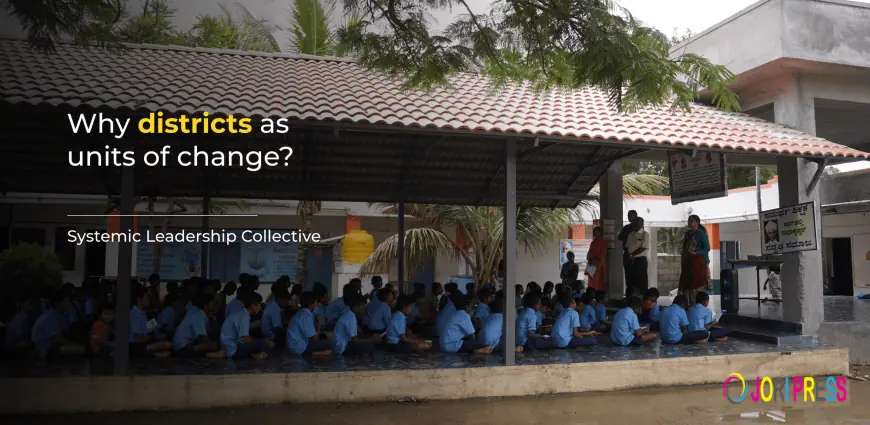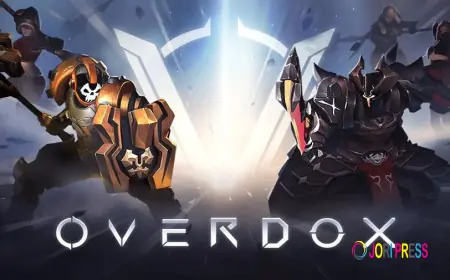Education Leadership and the Power of Collective Action in Education
Education leadership refers to the process of guiding and influencing individuals and institutions within the educational ecosystem to achieve meaningful outcomes. Effective leaders in education are not just decision-makers; they are changemakers who inspire others to realize a shared vision of progress. They bridge the gap between policy and practice, ensuring that every initiative, whether at the classroom, institutional, or policy level, supports the holistic growth of learners.

In the ever-evolving world of education, strong leadership plays a pivotal role in shaping the direction, values, and impact of learning systems. Education leadership today goes far beyond the confines of administration—it embodies vision, collaboration, and a commitment to equity. When this leadership is combined with collective action in education, the results can be transformative. Together, these forces can address systemic challenges, inspire innovation, and create environments where students, teachers, and communities thrive.
Understanding Education Leadership
Education leadership refers to the process of guiding and influencing individuals and institutions within the educational ecosystem to achieve meaningful outcomes. Effective leaders in education are not just decision-makers; they are changemakers who inspire others to realize a shared vision of progress. They bridge the gap between policy and practice, ensuring that every initiative, whether at the classroom, institutional, or policy level, supports the holistic growth of learners.
In modern contexts, education leadership is about adaptability. The challenges facing education today—technological disruption, socio-economic inequality, and evolving learner needs—demand leaders who can think strategically, act ethically, and engage communities. These leaders recognize that true progress is not achieved in isolation but through collaboration and empowerment.
The Role of Vision and Innovation
At the heart of effective education leadership lies vision. A clear and inclusive vision guides educators, administrators, and policymakers toward long-term goals while maintaining flexibility in approach. Leaders who cultivate innovation in education encourage experimentation and risk-taking within safe boundaries. They understand that traditional models of teaching may not suit the rapidly changing global context and are open to new pedagogical methods, digital learning tools, and learner-centered practices.
For example, visionary education leaders champion initiatives like blended learning, competency-based assessments, and skill-oriented curricula. These strategies not only enhance learning outcomes but also prepare students for real-world challenges. More importantly, they build ecosystems where educators feel empowered to collaborate, share insights, and grow together—laying the foundation for collective action in education.
Collective Action in Education: A Catalyst for Change
Collective action in education refers to the unified efforts of diverse stakeholders—teachers, administrators, parents, students, and policymakers—toward common educational goals. When communities come together, they can identify shared challenges, pool resources, and co-create sustainable solutions. This approach strengthens accountability and ensures that education systems are more responsive to the needs of learners.
One of the greatest strengths of collective action is inclusivity. It recognizes that everyone involved in education has a voice and a role. Teachers contribute their classroom expertise; parents provide insights into students’ needs; students share their experiences; and policymakers set frameworks that encourage progress. When these voices are integrated, decisions become more equitable and effective.
Moreover, collective action amplifies the impact of education leadership. Leaders who embrace collaboration foster trust and transparency. They create spaces where ideas can be exchanged freely and solutions are developed collectively rather than imposed hierarchically. This participatory approach not only improves educational outcomes but also strengthens community ownership and resilience.
How Leadership and Collective Action Intersect
Education leadership and collective action in education are deeply interconnected. A leader’s ability to inspire collaboration determines the success of collective efforts, while collective engagement reinforces leadership credibility. Leaders who prioritize participation over authority often see more sustainable and inclusive results.
For instance, when school principals invite teachers and parents to participate in decision-making, the sense of ownership increases across the community. Similarly, policymakers who involve educators in shaping curriculum reforms ensure that new initiatives are grounded in classroom realities. This shared responsibility nurtures mutual respect and builds a culture of continuous improvement.
Furthermore, collective action supports distributed leadership—an approach where leadership responsibilities are shared across various levels of the educational ecosystem. Rather than centralizing authority, distributed leadership encourages teamwork, innovation, and accountability. In such environments, every stakeholder becomes a leader in their own right, contributing to the larger vision of educational excellence.
Building Strong Education Ecosystems Through Collaboration
Sustainable progress in education requires systems thinking. Education does not exist in isolation; it is connected to social, economic, and cultural dimensions of society. Effective education leadership, therefore, must engage with communities, NGOs, governments, and private organizations to address the multifaceted challenges learners face.
Collective action in education enables this systemic approach. By fostering partnerships across sectors, education leaders can mobilize resources, advocate for policy reform, and enhance access to quality learning opportunities. For example, collaborations between schools and technology companies can bridge the digital divide, while partnerships with local communities can make education more inclusive and culturally relevant.
Such initiatives highlight how leadership rooted in collaboration can drive long-term transformation. When everyone feels responsible for the success of the education system, progress becomes a shared achievement rather than an individual accomplishment.
Overcoming Barriers to Collective Action
Despite its potential, collective action in education often faces challenges such as limited communication, lack of trust, and conflicting priorities among stakeholders. Effective education leadership can help overcome these barriers through clear communication, empathy, and transparency.
Leaders must cultivate trust by ensuring that every stakeholder’s contribution is valued. They should also establish mechanisms for accountability and continuous feedback. When communities witness tangible results from their collective efforts—improved student performance, better resources, and stronger teacher morale—the commitment to collaboration deepens naturally.
Moreover, embracing technology can strengthen collective action. Digital platforms for teacher collaboration, online parent forums, and data-driven decision-making tools can enhance coordination and inclusivity. These innovations enable education leaders to bridge gaps, streamline efforts, and sustain long-term partnerships.
The Future of Education Leadership and Collective Action
As education systems evolve, leadership and collaboration will continue to shape their future. The challenges of the 21st century—climate change, digital transformation, global inequality—require educational responses that are collective, creative, and compassionate. Education leadership must therefore embrace adaptability and inclusivity as core principles.
When leadership is guided by shared values and reinforced by collective action in education, the result is a resilient and equitable learning ecosystem. Together, educators, students, and communities can build a future where education not only imparts knowledge but also empowers every individual to contribute meaningfully to society.
Conclusion
Education leadership and collective action in education are not separate forces—they are partners in progress. Leadership provides the vision, while collective action ensures that vision becomes reality. In uniting diverse voices and fostering shared responsibility, education systems can move beyond incremental improvement toward true transformation.
By embracing collaboration, empathy, and innovation, leaders can nurture learning communities that inspire change far beyond the classroom. Ultimately, the strength of an education system lies not in individual brilliance but in the collective commitment of all who believe in the power of learning.
At ShikshaGraha, we believe that education, leadership, and collective action in education are the twin pillars of lasting impact. By bringing together educators, learners, and communities under a shared mission, ShikshaGraha continues to champion the vision of accessible, inclusive, and transformative education for all.
What's Your Reaction?
 Like
0
Like
0
 Dislike
0
Dislike
0
 Love
0
Love
0
 Funny
0
Funny
0
 Angry
0
Angry
0
 Sad
0
Sad
0
 Wow
0
Wow
0
















































